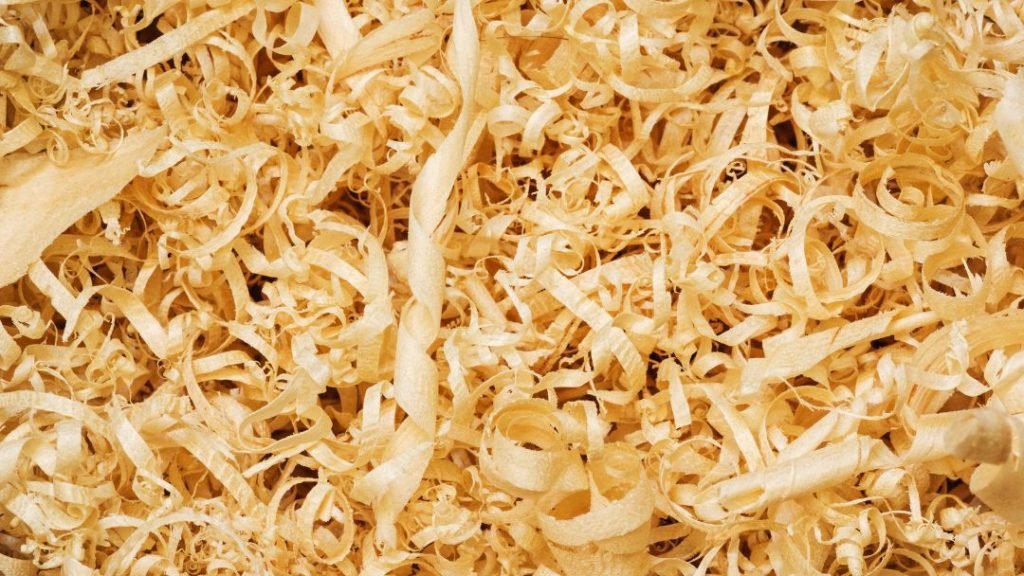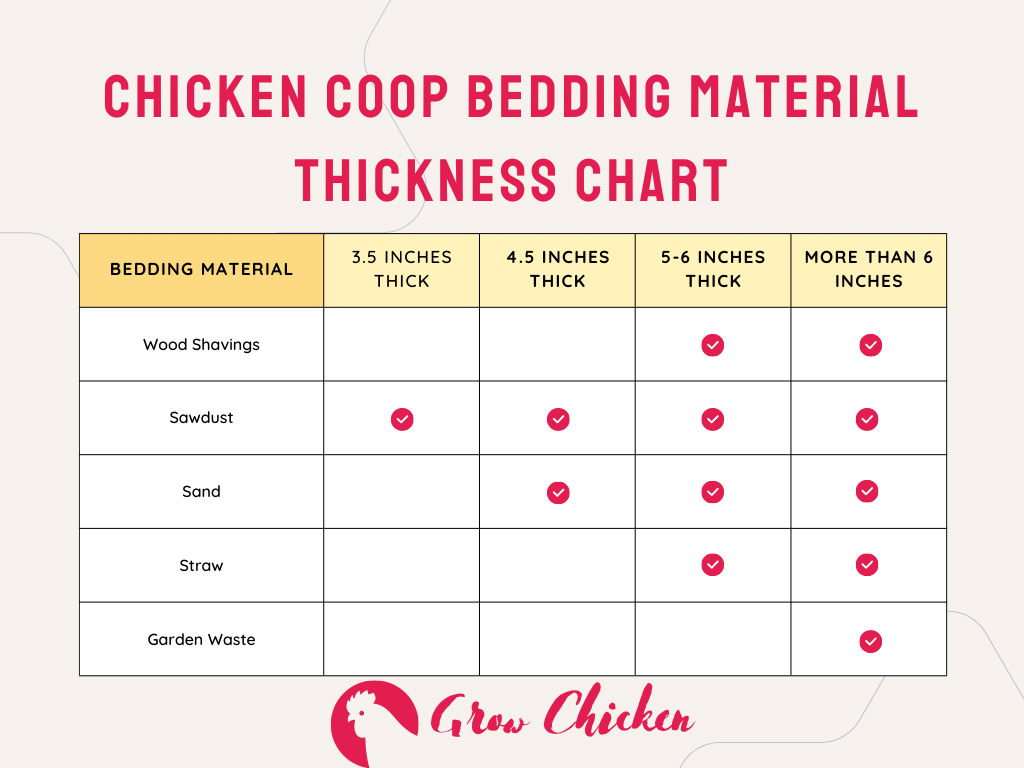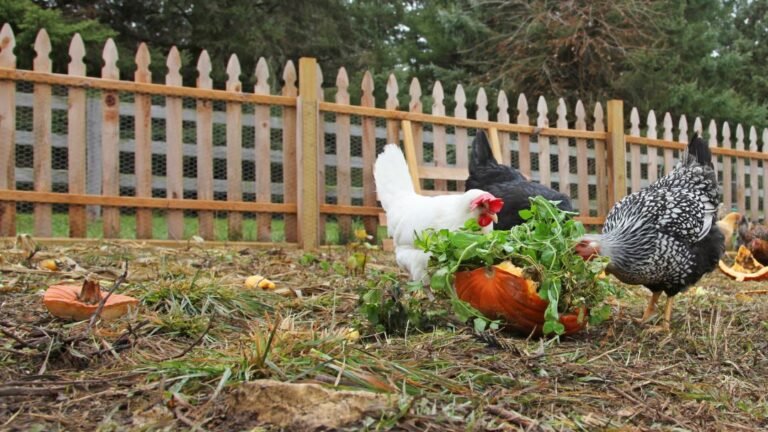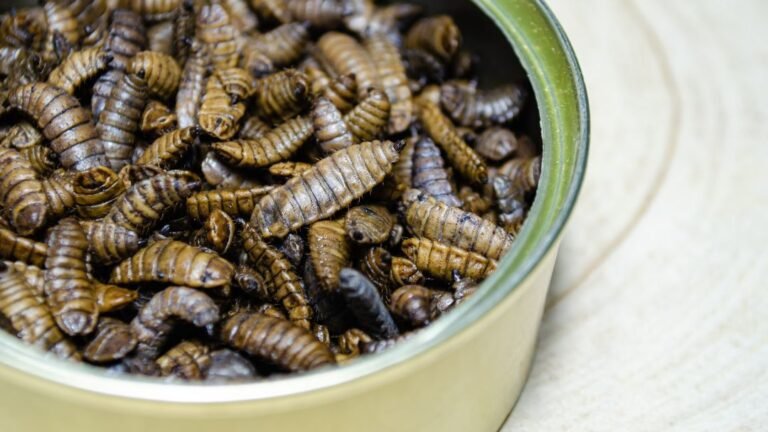Can you exactly answer why you should use bedding in chicken coops? The main advantage of flock bedding is to ensure the proper management of chickens’ manure and keep the floor dry, clean, and hygienic. Also, it offers a good amount of insulation on flocks’ feet.
But how much bedding in a chicken coop is needed? Keep the bedding at least 3 inches thicker to provide sufficient insulation in different climate conditions. Thicker bottom layers protect birds’ feet when they jump from the nest boxes to the ground.
How Much Bedding In Chicken Coop Is Needed?
A regular chicken coop must have at least 3 inches of thick bedding. But the ideal thickness level will depend on several factors. Here is why:
Floor Hardness Level
There should be enough gaps between the chickens’ feet and the coop ground.
If the base surface is made from rigid materials (like hardwood), you want to make the base layer a little thicker.
Keep it 4 to 6 inches thick to make flocks comfortable. Otherwise, they will feel too stiff when jumping on the coop floor.
Bedding Material
Not all bedding materials are the same. Some shrink too quickly, while others take time.
If the thickness of the bedding item becomes thinner quickly, you have two options.
Either keep the bedding layer a few inches thicker or change the base layer after every 2-3 days.
But, more frequent changing of the bedding is a good practice to ensure hygiene.
However, if you maintain a busy schedule, keep the bedding thicker and change it once a week.
Birds’ Nature
Some chickens are too aggressive. They start pecking anything close to them.
If your flocks are not calm, keep the bedding slightly thicker.
This will prevent them from biting it with their beak.
But 3-inch bedding is enough if your birds are calm in nature.
Number of Chickens
How many flocks do you want to raise in a chicken coop?
Keeping at least 3-4 square feet of space for each chicken is a solid rule of thumb.
But, if you want to grow more chickens in a smaller place, their bedding needs to be thicker than regular options.
Excessive movements of birds cause early shrinkage of the bedding. It damages the base layer quickly
The base layer can be around 5-6 inches. The more flocks live in a confined, the thicker the bedding should be.
However, if you don’t mind changing the bottom layer at least twice a week, it doesn’t need to be too thick.
Small vs. Larger Chickens
Are you raising smaller or larger chickens? They come in different breeds.
The average weight of a flock is around 5.7 pounds. But it can be as high as 10-12 pounds or as low as 1.1 pounds.
Hence, your coop bedding thickness depends on your chickens’ weight.
If you have brought non-adult birds, they will keep growing until they reach 16 to 24 weeks of age.
Heavier flocks put extra pressure on the base layer of the coop. Unless you put thicker bedding, they will damage it within a short time.

How Often Should You Change Bedding In Chicken Coop?
It depends on several factors such as bedding material, the number of chickens compared to the coop size, chicken size & nature, etc.
Light Bedding
If you use light bedding, change it after every few days.
Most expert chicken farmers recommend replacing them at least twice a week.
But slightly thicker options may last for a week.
Heavier Bedding
On the contrary, heavier bedding can last up to 6 months if you follow the deep litter method.
Instead of changing the bedding regularly, add 2-3 inches of bedding material on top of the old bedding.
Chicken farmers prefer this option as it is easy to manage and doesn’t cause any issues to flocks.
In fact, you can continue it for up to 12 months.
But cleaning and scraping all the dirt from the scoop ground will be bigger chores.
It is best to get off the dirt and debris within six months.
What Is Bedding Material Best For Chicken Coop?
A lot of bedding materials are available. However, not all of them are great for all chicken coops. It depends on several factors. The followings are the most commonly used chicken coop beddings.
Wood Shavings
Wood shavings are affordable and readily available.
You can collect them from softwoods and hardwoods. Cedar and pine shavings are the two most popular choices.
They can last around six months or more. Keeping the wood shavings 5-6 inches thick is a solid rule of thumb.
But avoid using them for too long as they contain toxic substances. This may harm your flocks in the long run.
Sawdust
Sawdust is an excellent choice as it can absorb odor and moisture.
You can even use them to clean chicken poop quickly. This type of bedding can last up to 6 months.
Make sure the layer is at least 3-5 inches thick, depending on the number of chickens and climate conditions.
However, this chicken bedding is pretty dusty.
If your flocks eat them, it may cause breathing difficulties. Their eyes may burn if fine particles get inside the eyes.
Sand
Another effective but initially expensive option is sand.
It is simple to clean and offers increased cooling during the hotter months. But the thickness must be at least 4.5 inches if you want coolness.
Make sure to choose mid- to coarse-grained sand as they are not prone to become wet quickly.
This type of washed, construction-grade sand offers smooth drainage.
Avoid choosing the beach or fine-grained sand. They cause various health issues.
Changing the sand every two weeks or at least once a month is best.
Straw
Straw is another natural-based good bedding material. It has minimal dust and improved insulation.
However, this type of bedding is not the perfect option for maintaining a hygienic environment. After all, it can’t absorb moisture well.
Make sure to keep the base around 5- to 6-inches thick when using straws.
You can change straw bedding once every 3 to 4 months if you follow the deep litter method.
Otherwise, it is best to change to this type of base layer every week to maintain a clean environment.
Garden Waste
Another almost cost-free option is garden waste. You can use grass, clippings, and tree leaves.
But making them fully dry before using them is necessary. Otherwise, they will rot and release a bad smell.
Keep the bedding around 6 inches thick to prevent quick shrinkage issues.
Choose longer grasses as they have more seeds. It creates a more comfortable environment for flocks.
You can either follow a deep litter method or frequently change them.
But, it is not for all year round. You need to find alternative bedding materials during the off-season times.
| Bedding Material | Ideal Thickness Level |
| Wood Shavings | 5 to 6 inches thick |
| Sawdust | At least 3.5 inches thick |
| Sand | At least 4.5 inches thick |
| Straw | 5 to 6 inches thick |
| Garden Waste | Around 6 inches thick |

Is Too Much Thick Bedding Bad For Chicken Coop?
Keeping the bedding thicker than average is not a problem if you are ready to take the hassle of cleaning them.
Removing the entire bedding is necessary once the coop floor doesn’t allow any more materials to add.
If there is no huge gap between the chicken coop ceiling and the ground, the interval period for cleaning the chicken coop will be shorter.
The deep bedding or deep litter method effectively creates a solid surface for your flocks.
But make sure to add a fresh layer regularly. Also, the bedding must be free from damp conditions.
Your flocks will have various types of diseases if the bedding material doesn’t absorb moisture.
Final Words
Still, wondering how much bedding in a chicken coop is needed? It can be 3 to 6 inches or more, depending on the coop size, climate conditions, and your chicken’s nature.
Regardless of the chicken bedding you use, make sure to keep it clean, dry, and hygienic. Otherwise, your flocks will be infected with various diseases that may even kill them.


